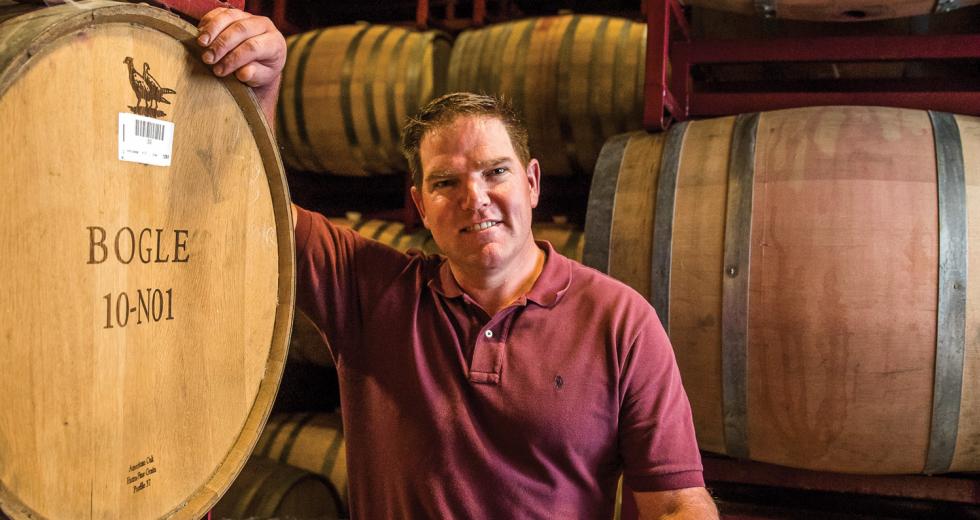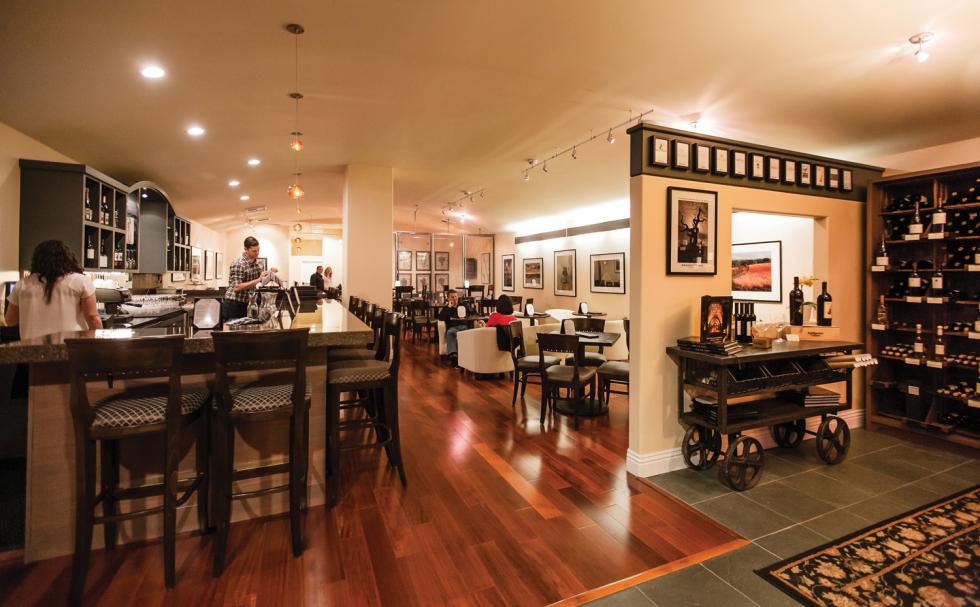Sitting on the deck of his family’s tasting room, Warren Bogle looks out over the vineyard his grandfather planted in 1968 in the low-lying land of the Sacramento-San Joaquin Delta. That first planting of 20 acres of vines in Clarksburg transformed the Bogle family from row crop farmers to one of the region’s most successful winemakers.
Today, the Bogles farm nearly 1,600 acres with a stewardship mindful of the future — one rooted in sustainability and preserving the land for their children. “We’ve farmed here for six generations,” says Bogle, president of Bogle Vineyards. “The land is a farmer’s livelihood — whether it’s grapes, corn or any other crop.”
Warren Bogle is leading the shift to sustainable winemaking in
the Capital Region

In 2008, the Bogles earned a “Certified Sustainable” designation for their vineyards under the Lodi Rules for Sustainable Winegrowing program, after demonstrating measurable standards of environmental health, as well as employee and community care. Their winery operation is also certified through the California Sustainable Winegrowing Alliance.
When it comes to grape-growing, California’s farmers are increasingly turning to sustainable practices. According to the California Sustainable Winegrowing Alliance, more than 1,500 vineyards encompassing nearly 185,000 acres (or about a quarter of the state’s wine acreage) had certified as of 2015, as well as 131 wineries that produced 173 million cases of wine.
“It’s a very popular trend right now in the U.S. and the global wine industry,” says Dr. Liz Thach, professor of wine and management at Sonoma State University. “I would say California has really been the leader on this.”
The practices associated with sustainable winegrowing include common-sense ones that many farmers have already embraced, such as planting a cover crop in between the vines to add nutrients to the soil and attract beneficial insects, or installing drip irrigation to conserve water.
But there are also newer ideas that farmers can adapt: Bogle installed plastic owl boxes along the perimeter of his vineyards, so that the owls could take care of the burrowing voles than can damage vine roots. Such alternatives to traditional agrochemicals are a core part of the pest-management program.
Plastic owl boxes at Bogle Family Winery attract owls to prey on
burrowing voles that damage vine roots.
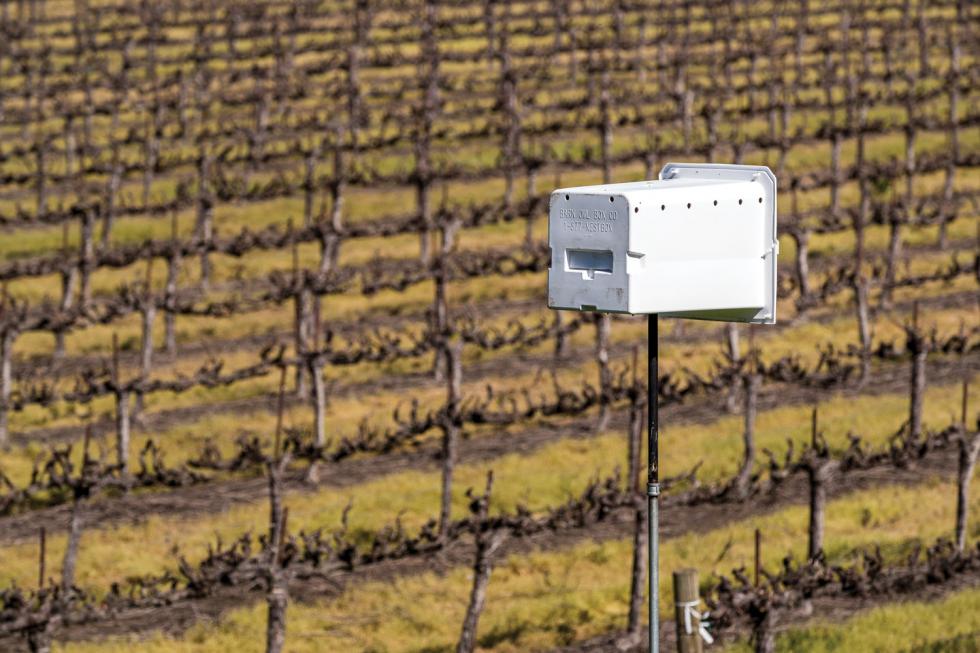
The certifications, which farmers helped create, go beyond environmentally-conscious farming and seek a holistic approach to the business — one that includes people and their long-term economic viability. To earn a certification, a farmer, for example, must meet social responsibility standards, such as providing a good wage and benefits to their employees, and show efforts to build good relations with their neighbors.
Related: A Slow-Growth Splash
“This wasn’t made to be something everybody can do right away. It is challenging,” says Dr. Stephanie Bolton, the grower communications and sustainable winegrowing director at the Lodi Winegrape Commission. Under the Lodi Rules program, one of several that offers a certification, “the science behind every standard was discussed by farmers,” Bolton says.
There are 36,424 acres certified sustainable under the Lodi Rules program — 23,847 acres in Lodi and 12,577 from other regions, such as Clarksburg, where Bogle is located.
The drive to sustainability appears to be one largely driven by the industry, as opposed to customers. Studies show that most consumers continue to rank sustainability low among their preferences when choosing a wine. For example, the 2016 Survey of American Wine Consumer Preferences shows just 4 percent of those surveyed indicated that they looked for sustainable wine.
“It’s obvious the grapes pick up things in the soil. So, why would you want to pick up things that are unhealthy? I just believe in working with nature and what’s real.”Kate Chomko, owner, Downtown and Vine
Key to that small group of wine drinkers are the younger customers, says Thach, who co-authored the study. “A lot of the younger generation, the millennials, are really interested in this,” Thach says. “They want to know the product they are buying is sustainably made.”
When it comes to distributors, retailers and restaurateurs, however, the numbers are more favorable. Market research released in January by the California Sustainable Winegrowing Alliance show those groups frequently (21 percent) or occasionally (52 percent) consider sustainable practices when selecting wines.
At the Sacramento restaurant Downtown and Vine, owner Kate Chomko seeks out regional, sustainable food and wine, and she says she makes it a point to educate her patrons about the growers’ commitment to produce a sustainable product. For her, one of the reasons customers should care about sustainability — aside from being good for the environment — is the quality of the wine.
“Every time you taste a wine, you taste what’s in it, whether it’s eucalyptus or violet or different herbs,” Chomko says. “It’s obvious the grapes pick up things in the soil. So, why would you want to pick up things that are unhealthy?” She adds, “I just believe in working with nature and what’s real.”
Related: From Entertainment to Coworking to Wine
At Bogle, almost 70 percent of the grapes that go into the bottles have been farmed on certified sustainable vineyards — in large part because the winery in 2010 began paying their growers an extra $25 per ton of grapes grown in certified vineyards. That kind of a bonus is rare, and Bogle is just one of a handful of wineries that pay a premium for certified grapes.
“If somebody asks [a farmer] to go a step above, the right thing to do is to compensate them,” says Bogle, who this year will begin to require all his growers from Mendocino to Lodi to the Central Coast to certify.
So, soon Bogle will be able to track each unit of grapes that goes into its bottles to every vine block — giving the winemakers the ability to engage growers about performance thanks to the detailed paper trail required of a sustainable vineyard. Already, the natural competitiveness of grape-growers has kicked in and they are “striving to do better,” Bogle says.
It will also mean that Bogle can put the sustainable seal on its labels — a clear sign to customers shopping for wine at the grocery store.
While the quality of the wine is certainly a factor — along with the desire to sell more wine — for many grape growers, a sustainable certification goes much deeper. It’s about taking care of the land and making sure it’s there for their children and grandchildren. That is the case for Warren Bogle, his sister Jody and brother Ryan, who together rely upon the fertile Delta soil along the Sacramento River — as their ancestors did when they settled outside of Clarksburg inthe mid-1800s.
“It’s the right thing to do for the environment,” Bogle says, “and we want to be sure we’re growing grapes here for the next generation.”
Are you more likely to drink a certified-sustainable wine? TWEET US @COMSTOCKSMAG.
Recommended For You
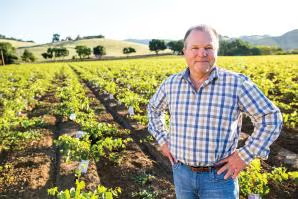
Grape Expectations
Solano County’s wine industry comes of age, and the timing couldn’t be better.
The phrase “wine country” harkens to Napa, Sonoma, Calistoga. But Solano? Not so much. In fact, the Suisun Valley appellation was formed in 1982, less than a year after Napa’s. The local environment boasts much of the same benefits, too.
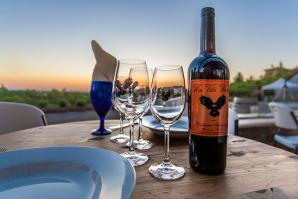
Wine Winner
How Dr. Grover Lee went from the pharmacy to the vineyard
Imagine you’re a successful businessman, but what you really want to be is a professional baseball player. You’re so sure of yourself that you begin spending nights and weekends studying and training as if Major League Baseball will soon be calling. And then they actually do, and at your first at-bat, you clear the bases.
That’s pretty much how things happened when Granite Bay pharmacist Dr. Grover Lee decided to become an award-winning winemaker.



